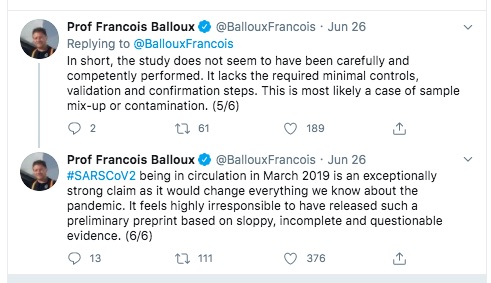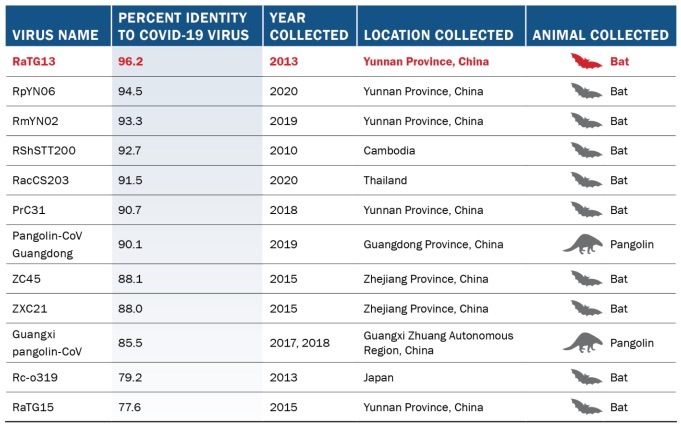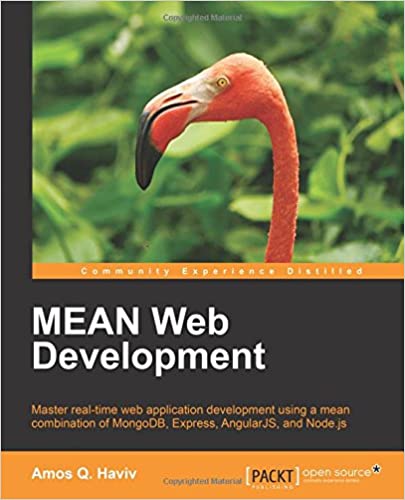; Date: Sun Nov 07 2021
Tags: Coronavirus »»»»
The official COVID-19 origin story, is that it came from Wuhan China, probably in a "wet market". Certain evidence is available showing COVID-19 was circulating in at least Barcelona and Milan well before the official origin in Wuhan. Recently the US Director of National Intelligence (ODNI) released an updated report on the origin of COVID-19. As useful as this report is, it contains a significant flaw in relying on the official origin story in Wuhan. But, ODNI, what about the earlier spread of the disease in Europe?

The ODNI report (see the links at the end) we have available is an unclassified assessment, which is surely a summary of another document which is a classified assessment on the origin of COVID-19. This disease, which has killed over 5 million people since December 2019, presents us with a mystery as to its origin. The official story is that the first COVID-19 infections occurred in December 2019, in Wuhan China, and that the disease jumped from bats to humans in a "wet market" (where live animals are sold) in Wuhan. But, that story is, uh, not well supported with solid evidence.
The ODNI report is meant to answer the mysteries, but it is very inconclusive. The ODNI report concludes COVID-19 is not a bioweapon launched by the Chinese government, that the Chinese government had no foreknowledge of its existence, that it probably was not an accidental release from the Wuhan Institute for Virology, and it was probably not genetically engineered. For some of those claims, especially the latter two, the report says the evidence is uncertain, acknowledges the possibility that COVID-19 was genetically engineered, and the possibility that it could have been released accidentally from the WIV lab.
The geopolitical stakes are high for this issue. Suppose COVID-19 was genetically engineered, and purposely released to the public as a bioweapon? There are plenty of people pointing fingers at China. On the other hand, China is pointing its finger at the USA, due to research which was conducted at a lab in North Carolina which was related to research at the Wuhan Institute of Virology. In any case, if the bioweapon story was true, then what should be the action taken against the responsible country? The answer for that is way above all our pay grades.
We must see the ODNI report as an attempt to determine whether the world should declare some kind of sanctions, or other action, on China.
Let's take one of the theories as an example. In October 2019, Wuhan happened to be the host site of the 2019 World Military Games. That event is equivalent to the Olympics but featuring members of militaries of governments from around the world. The claim is that China wanted to spread a worldwide pandemic by spreading a virus at that event. But if that were the case, why didn't COVID-19 jump from Wuhan to military bases around the world? Instead, COVID-19 appeared in Lombardy, then in New York City, and in areas where there are no military bases, but instead see lots of travel to and from China.
COVID-19 was circulating in Europe in 2019
There is significant evidence that COVID-19 was circulating in Europe, specifically in Milan Italy and Barcelona Spain, in September 2019 and perhaps earlier. But the ODNI assessment did not mention this at all. Instead, it focused on Wuhan as the first outbreak of COVID-19. Surely the authors of the ODNI paper knew about the evidence we're about to go over. Why did they not include this in their assessment?
The evidence for pre-Wuhan spread of COVID-19 is based on retrospective analysis of samples that were fortuitously collected before December 2019.
Patient Zero, Milan Italy, November 2019: Let's start this with a simple case, which is labeled as patient zero in Milan Italy. According to L'Unione Sarda, and the British Journal of Dermotology (links below), researchers looked at skin biopsies dating from the fall of 2019, in northern Italy, from patients with atypical skin diseases. It's known that 5-10% of COVID-19 cases involve skin diseases. The earliest sample found came from a young woman from Milan, whose biopsy was taken in November 2019, which showed "the presence of RNA gene sequences of the SARS-CoV-2 virus". Two techniques were used, immunohistochemistry and RNA-FISH.
November 2019 is at least a month before the official origin in Wuhan, and three months before the earliest officially recognized COVID-19 patient in Italy (and Europe) in late February 2020. As interesting as this is, we're just getting started.
Blood samples taken in canser screening trial: The next story also comes from Italy, and I wrote about this research earlier in June 2021. In this case researchers looked at blood samples collected from across Italy between September 2019 and March 2020. Their paper appeared in Tumori Journal in November 2020 (link below). These patients were being screened for a potential cancer trial, and their blood samples had been preserved.
Of the 959 samples, 111 had COVID-19 antibodies. Of the samples infected with COVID-19, 23 were taken in September-October 2019, with the earliest being on September 3. The blood samples were analyzed for the presence of SARS-CoV-2 receptor-binding domain (RBD)-specific antibodies. Anyone with those antibodies would have been exposed to SARS-COV-2, a.k.a. COVID-19.
The researchers detected these antibodies in all sampling periods up to March 2020, when the study ended. The majority of samples containing antibodies came from people living in Lombardy. But, matches were found in all areas of Italy.
September 2019 is four months or more earlier than the official origin in Wuhan. For patients to have antibodies, they had to have been infected in August 2019 or perhaps earlier.
Sewage system sampling in Barcelona: The next story comes primarily from Barcelona, and has to do with finding traces of COVID-19 in samples taken from sewage treatment systems. Scientists are widely taking sewage samples to detect traces of COVID-19 or other diseases. They have found this to be a useful indicator of how widespread the disease is in given areas. I earlier wrote about this research in June 2021, and in July 2020. The links to sources are below.
In Milan, Italy, COVID-19 traces were found in the sewage system as early as December 18, 2019. This corresponds to the already established spread of COVID-19 in Milan.
The samples from Barcelona, Spain, are an entirely different story. In that case they had sewage samples dating back to January 2018. Researchers found matches in samples starting in January 2020, corresponding to the time period for the standard outbreak of COVID-19. However, there was one other match, dated from March 12, 2019.
March 2019 is a full nine months before the Wuhan origin in December 2019. That is early enough to raise eyebrows, and one might wonder why Barcelona would have a COVID-19 outbreak so early.
A possible explanation is the Mobile World Congress. This is a massive trade show for the mobile device industry that, until 2019, was held every year in Barcelona. If it were not for COVID-19, MWC would have been held in 2020 and 2021 as well, but as it stands the last instance of MWC was February 25-28, 2019. This is coincidentally just before the March 12 date. Could Chinese participants at MWC have been carrying COVID-19 in February/March 2019? If so, they would have infected some people in Barcelona, leaving traces in the sewage system.
But, we must point out the following tweets:

Professor Francois Balloux, from University College London, suggests the study in question was sloppy and contained errors. That is one mans opinion, and a posting on Twitter does not constitute official peer review. However, the study appears on a preprint website (MedRxiv) and I was unable to find it having been published in a peer-reviewed journal. Maybe it did not pass muster through normal peer review, and it should be discounted as Prof. Balloux suggests.
SARS-COV-2 is derived from bats in an area of southern China and Northern Laos
Building a better picture of COVID-19's origins requires understanding where the virus came from. Researchers have identified its origin with bat coronaviruses, with close matches found in bat colonies in southern China and northern Laos.
In October 2021, the NY Times and The New Yorker both published in-depth articles discussing the origin of the SARS-COV-2 virus. Additionally, in September 2020, the American Journal of Tropical Medicine and Hygiene published a study on COVID-19's origin.
These sources note that a lot of research has been done on bat coronaviruses in bat populations located in caves in southern China, northern Laos, Thailand and Cambodia. As early as 2007, scientists warned that there is a "large reservoir of SARS-CoV–like viruses in horseshoe bats" in that region, which they called a ticking time bomb. Those warnings went unheeded, and now we're all paying the price.
The NY Times and New Yorker both report that humans living in the area have caught diseases from bats. A case in 2012 involved several workers in a disused mine in southern China, who caught a strange illness. Researchers at the Wuhan Institute of Virology investigated, and then began cataloging bat coronaviruses from caves in that area.
The WIV has amassed a large catalog of these viruses. The closest matches are:

The closest match, RaTG13, was taken from the vicinity of the cave where those workers became sick, back in 2013. It is 96% similar to the SARS-COV-2 virus. The question is, whether RaTG13 is the direct source of SARS-COV-2 virus, or whether it's simply a close cousin. This table clearly establishes that SARS-COV-2 is very similar to several bat coronaviruses, all located in bat caves in roughly the same area of the world, and is obviously derived from bats.
In other words, part of the SARS-COV-2 origin story is accurate. At some time in the past, a precursor virus to SARS-COV-2 transitioned from bats to humans. Further, the initial outbreak in Wuhan makes sense because of its proximity to the bat caves in the areas listed in this table.
The ODNI report, as well as the NY Times and New Yorkers articles, says every feature of the SARS-COV-2 virus has appeared in bat coronaviruses found in the wild. This fact supports the idea that SARS-COV-2 developed organically in the wild.
One issue making folks say otherwise are the critical furin cleavage sites on the SARS-COV-2 spike protein. Any virus with this feature can easily hop between species.
The presence of this feature in SARS-COV-2 is, to some experts, solid evidence that the virus was engineered in a lab. The article published by The New Yorker has an extensive discussion of this issue. For example, some claim that there was a research proposal for work that would be done either in the North Carolina lab, or in the Wuhan lab, to engineer a furin cleavage site onto a bat coronavirus.
The ODNI report has this to say:
For instance, academic literature has noted that in some instances betacoronaviruses have recombined with other viruses in nature and that furin cleavage sites (FCS)—a region in the spike protein that enhances infection—have been identified in naturally occurring coronaviruses in the same genetic location as the FCS in SARS-CoV-2. This suggests that SARS-CoV-2 or a progenitor virus could have acquired its FCS through natural recombination with another virus. -- Source: ODNI Declassified Assessment on COVID-19 Origins
In other words, it is inconclusive whether the FCS on the SARS-COV-2 spike protein is occurring naturally, or artificially inserted. All the allegations that COVID-19 is a genetically engineered bioweapon hinge on this one question, about this one detail.
Because the features are found in the wild, the ODNI report says most of the analysts agree that SARS-COV-2 was not genetically engineered in a laboratory. However, some of the ODNI analysts point to results from some researchers who performed genetic alterations without leaving a trace in the resulting genome. Normally genetic alterations leave an indicator in the genome that it was artificially modified. But, the possibility of engineering DNA or RNA without a trace makes it impossible to settle the question.
Progenitor viruses and the SARS-COV-2 family tree
Another source to consider is a report in Molecular Biology and Evolution for which a summary was written in News Medical, both in May 2021 (links below).
These reports raise the issue of identifying the family tree of SARS-COV-2. This virus did not poof itself out of thin air, but it developed through mutation from other viruses. It is claimed that precursors to the SARS-COV-2 virus were circulating widely in China, the United States of America, and elsewhere, before January 2020.
These researchers were able to identify several SARS-COV-2 variants in December 2019 and January 2020. Those variants differed by only 30 bases (genome locations), whereas the closest non-human virus they identified differed by 1100 bases.
That difference means there was a lot of mutations between the closest known non-human virus, and SARS-COV-2.
Unfortunately the paper in Molecular Biology and Evolution quickly gets into highly technical language making it hard for a layperson such as myself to understand what they're saying. The important result is they've identified, using mathematical modeling techniques, a family tree of the SARS-COV-2 virus. The variant recognized as the origin in Wuhan, known as the Wuhan-1 variant, is in the middle of that family tree, not the beginning of that tree.
They deduce that a currently unknown progenitor virus existed from which the Wuhan-1 variant was developed, which in turn led to the other variants of COVID-19.
Summary
A disease extremely similar to, if not identical to, COVID-19 was circulating in Europe well before December 2019. The evidence that it was in Barcelona in March 2019 is flimsy, but was included because of the possible connection with Mobile World Congress 2019. The evidence from Milan is clear, because they were able to directly find indicators in blood samples collected as early as September 2019.
Since Milan is in the middle of the region which saw a large COVID-19 outbreak in early 2020. Therefore, it seems likely (note, I am not any kind of epidemiologist) that large had to have been preceded by circulation of the disease ahead of time.
In this article I've used a short-hand, describing the disease spread detected in Milan, and possibly Barcelona, as COVID-19. The paper in Molecular Biology and Evolution makes it clear that such disease spread was probably not precisely the SARS-COV-2 virus (a.k.a. COVID-19). Instead, it's likely that a precursor virus to SARS-COV-2 was circulating.
Their estimate is that the most recent common ancestor (MRCA) of SARS-CoV-2 preceded the Wuhan-1 variant by at least 6-8 weeks.
But, there's a serious head-scratcher puzzle. The initial large outbreak was in Wuhan, and the bat coronaviruses which formed COVID-19's basis were in a population of bats near Wuhan. How was it circulating in northern Italy as well? It could have been circulating in other areas that see lots of travel to/from Wuhan. Why wasn't the initial large outbreak of COVID-19 in one of those areas?
The bottom line problem is the large number of unanswered questions about COVID-19.
Resource Links
- [ODNI] October 29, 2021
Office of the Director of National Intelligence (ODNI) Declassified Assessment on COVID-19 Origins
- [NY Times] October 2021
Newly Discovered Bat Viruses Give Hints to Covid’s Origins
- [Am J Trop Med Hyg] September 2020
The Origin of COVID-19 and Why It Matters
- [News Medical] May 2021
The ancestor of SARS-CoV-2’s Wuhan strain was circulating in late October 2019
- [Molecular Biology and Evolution] May 2021
An Evolutionary Portrait of the Progenitor SARS-CoV-2 and Its Dominant Offshoots in COVID-19 Pandemic
- [L'Unione Sarda] January 2021
The Italian "patient zero" has been found: a young woman with dermatosis
- [British Journal of Dermotology (BJD)] January 2021
COVID-19-related dermatosis in November 2019: could this case be Italy’s patient zero?
- [Tumori Journal] November 2020
Unexpected detection of SARS-CoV-2 antibodies in the prepandemic period in Italy
- [The Local] July 2021
Covid-19: Italian study revives debate over when pandemic started in Europe
- [TechSparx] June 2021 COVID-19 origin in question due to early detection in Barcelona on March 2019 and Milan in December 2019 (UPDATE)
- [TechSparx] July 2020 COVID-19 origin in question due to early detection in Barcelona on March 2019 and Milan in December 2019
- [ETOXICOLOGY] May 2020
Presence of SARS-Coronavirus-2 RNA in Sewage and Correlation with Reported COVID-19 Prevalence in the Early Stage of the Epidemic in The Netherlands
- [Science of The Total Environment] June 2020
SARS-CoV-2 has been circulating in northern Italy since December 2019: evidence from environmental monitoring
- [The Conversation] June 2020
Was coronavirus really in Europe in March 2019?
-
Sentinel surveillance of SARS-CoV-2 in wastewater anticipates the occurrence of COVID-19 cases











